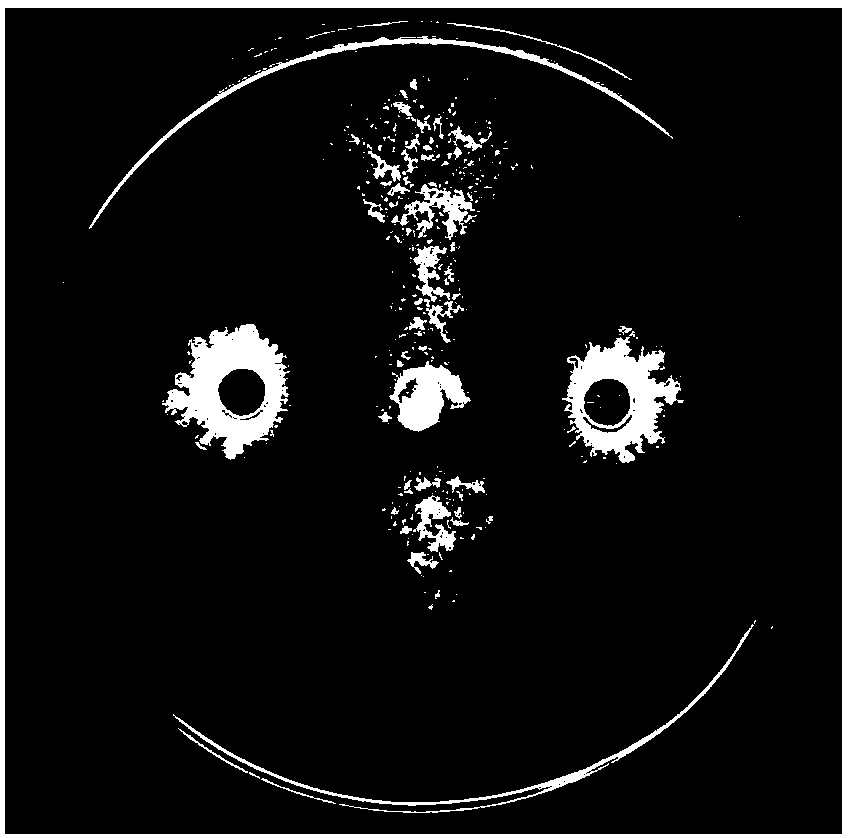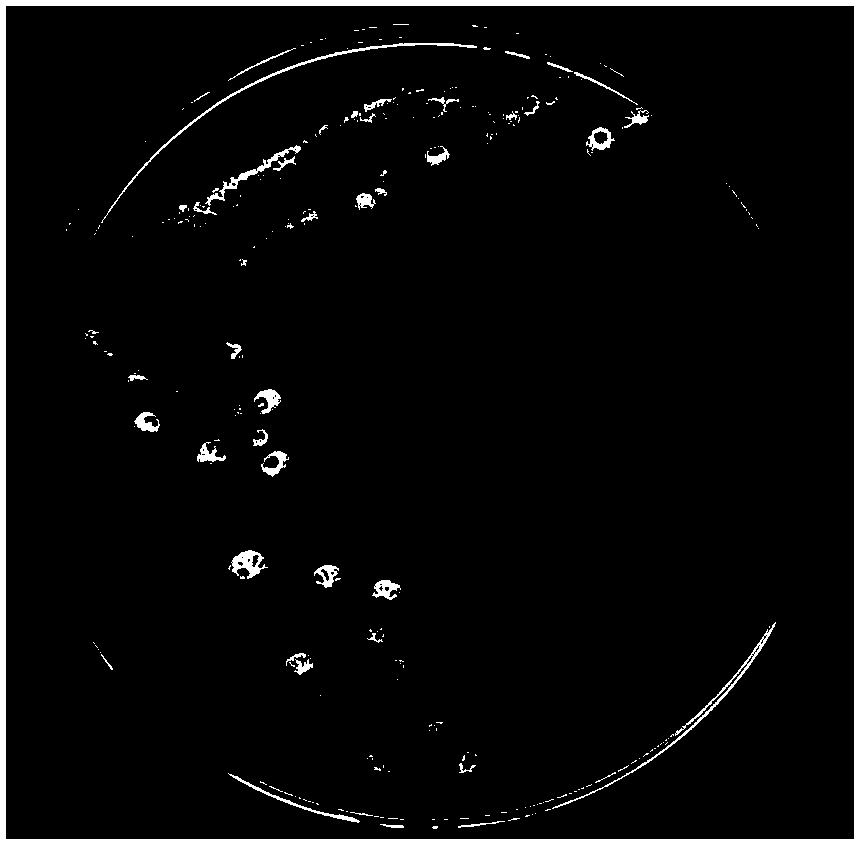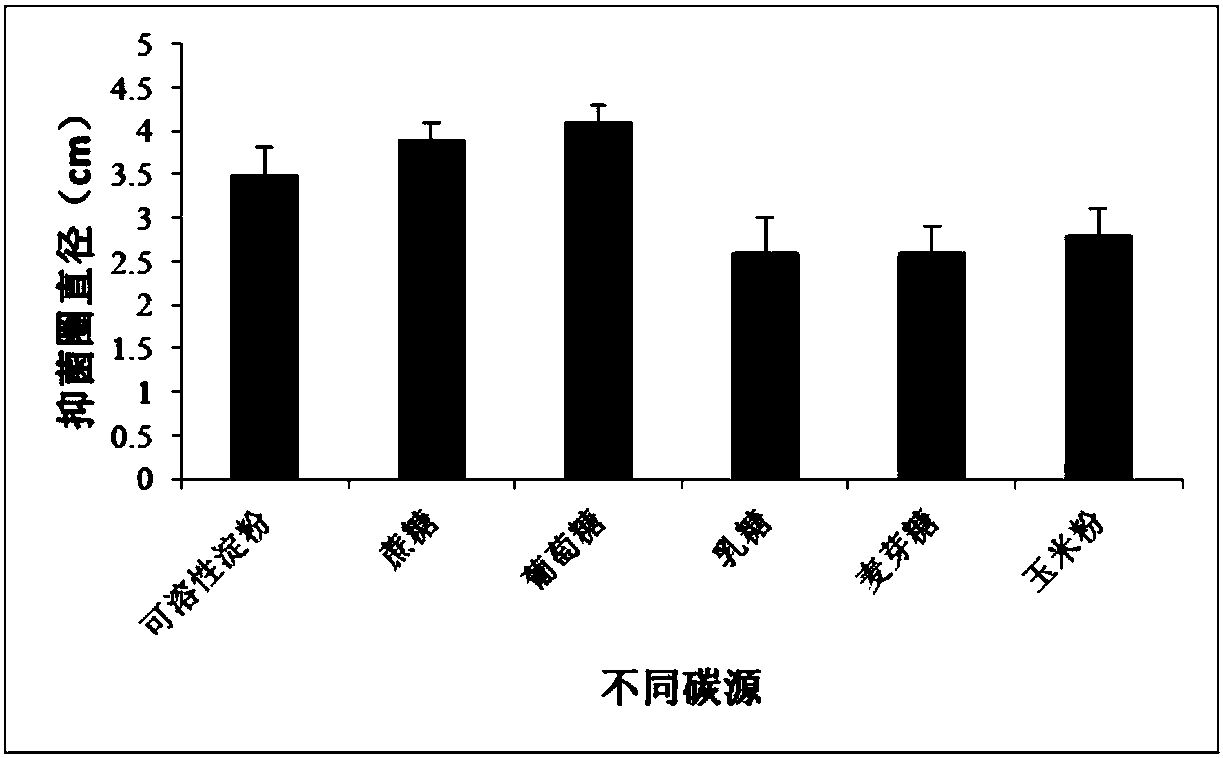Endophytic bacterium with antagonistic effect on plant pathogenic fungi
A technology of bacilli and strains, applied in the directions of plant growth regulators, bacteria, botanical equipment and methods, etc., to achieve the effect of safe biocontrol and stable biocontrol
- Summary
- Abstract
- Description
- Claims
- Application Information
AI Technical Summary
Problems solved by technology
Method used
Image
Examples
Embodiment 1
[0036] Example 1 Isolation and identification of Bacillus amyloliquefaciens strain BSY3
[0037] 1. Isolate strains from marigold plants collected in Guangzhou Baiyun Nursery. The specific isolation method is as follows:
[0038] (1) Single colony isolation
[0039] 1) Clean the collected fresh marigold leaf material with tap water;
[0040] 2) After rinsing once with sterile water, soak in 75% alcohol for 5 minutes, soak in 2% sodium hypochlorite solution for 2 minutes, and then rinse with sterile water 4 times, and spread the sterile water after the last rinse as a blank control ;
[0041] 3) Put the sterilized fresh plant material in a sterilized mortar, add a small amount of sterile water to grind it into a homogenate, and then dilute it into different gradients of the grinding solution and spread it on a flat plate;
[0042] 4) Place the plate in a 30°C incubator for culture, observe the growth of the colonies, then pick colonies of different shapes, purify and cultivate...
Embodiment 2
[0062] Example 2 Optimum culture condition optimization of Bacillus amyloliquefaciens strain BSY3
[0063] 1. The most suitable medium for strain growth
[0064] (1) Optimization method: Strain BSY3 was streaked and activated on LB medium (30°C), then inoculated into LB liquid medium, and activated at 280 rpm and 30°C. The activated strain BSY3 was inoculated into the shake flask fermentation basal medium YGN [10 g of yeast extract (with different nitrogen sources), 10 g of glucose (with different carbon sources), 5 g of NaCl (with different inorganic salts) at a 0.5 % inoculation amount. time), dilute to 1 L, pH 7.0]. After inoculation, culture in a shaker at 30 °C and 160 rpm for 2 to 5 days, and then centrifuge the fermentation broth of the above-mentioned different substances (carbon source, nitrogen source and inorganic salt) at 12000 rpm for 15 min, and the supernatant was filtered through 0.22 μm The original fermentation liquid is obtained after filtration by the por...
Embodiment 3
[0078]Example 3 Detection of the antagonistic effect of Bacillus amyloliquefaciens strain BSY3 on common pathogenic fungi
[0079] 1. The BSY3 strain was co-cultured with several pathogenic fungi, and its antagonism to pathogenic fungi was detected.
[0080] Tested strains: Harmful Phylonotus xylinum ( P. noxius ), white butterfly anthracnose pathogen ( Colletotrichum sp.), canna blast pathogen ( Pyricularia cannaecola ), black pine leaf spot pathogen ( Pestalotiopsis sp.), the pathogen of banana wilt ( Fusarium oxysporum f. sp. cubes ) and Sclerotinia sclerotiorum pathogen ( Sclerotinia sclerotiorum ).
[0081] 2. Persistence culture detection method:
[0082] (1) Inoculate a 1% (v / v) ratio of the bacterial solution into a 150 mL Erlenmeyer flask filled with 40 mL LB medium, and incubate at 28°C and 200 rpm for 2.5 days;
[0083] (2) Centrifuge at 8000 rpm for 10 min to collect the supernatant, and then pass through a 0.22 μm filter membrane to obtain the crud...
PUM
 Login to View More
Login to View More Abstract
Description
Claims
Application Information
 Login to View More
Login to View More - R&D
- Intellectual Property
- Life Sciences
- Materials
- Tech Scout
- Unparalleled Data Quality
- Higher Quality Content
- 60% Fewer Hallucinations
Browse by: Latest US Patents, China's latest patents, Technical Efficacy Thesaurus, Application Domain, Technology Topic, Popular Technical Reports.
© 2025 PatSnap. All rights reserved.Legal|Privacy policy|Modern Slavery Act Transparency Statement|Sitemap|About US| Contact US: help@patsnap.com



